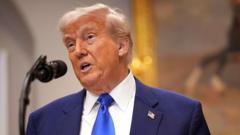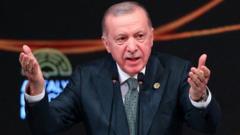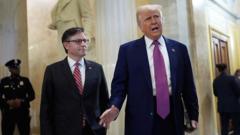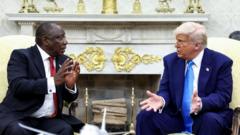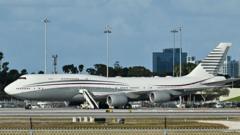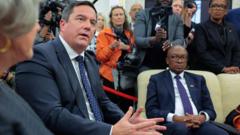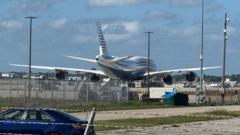In light of escalating security costs demanded by President Trump, NATO countries are considering a new spending strategy that expands the scope of military funding.
NATO's New Spending Strategy: Adapting to Defense Demands

NATO's New Spending Strategy: Adapting to Defense Demands
Amidst tensions with Russia, NATO redefines military expenditure to incorporate modern security needs.
As NATO faces pressures from the U.S. for increased defense spending, European allies are adapting by broadening what constitutes military expenditure. Recently, President Trump's call for NATO countries to allocate 5% of their national income to defense has given rise to a novel approach, with countries now endorsing a plan that targets 3.5% of GDP on traditional military expenses and an additional 1.5% for nontraditional defense-related investments by 2032.
This shift reveals an innovative strategy in which member nations may invest in critical infrastructure improvements, such as railways and bridges capable of accommodating heavy military transport, cybersecurity enhancements, and the advancement of communication technologies pertinent to warfare. Alarmed by potential reductions in American military support if defense spending falls short, several countries are ready to contribute more towards collective defense efforts.
NATO Secretary General Mark Rutte emphasized the necessity of ensuring robust support in defense capabilities following a recent meeting with foreign ministers in Turkey. He underscored the importance of enhancing infrastructure for military logistics, hilariously pointing out that European bridges should be safe not only for civilian vehicles but for tanks as well.
In the realm of security, the redefined spending framework seeks to integrate a 21st-century perspective into NATO's original charter, ensuring preparedness against diverse security threats faced by member nations.
This shift reveals an innovative strategy in which member nations may invest in critical infrastructure improvements, such as railways and bridges capable of accommodating heavy military transport, cybersecurity enhancements, and the advancement of communication technologies pertinent to warfare. Alarmed by potential reductions in American military support if defense spending falls short, several countries are ready to contribute more towards collective defense efforts.
NATO Secretary General Mark Rutte emphasized the necessity of ensuring robust support in defense capabilities following a recent meeting with foreign ministers in Turkey. He underscored the importance of enhancing infrastructure for military logistics, hilariously pointing out that European bridges should be safe not only for civilian vehicles but for tanks as well.
In the realm of security, the redefined spending framework seeks to integrate a 21st-century perspective into NATO's original charter, ensuring preparedness against diverse security threats faced by member nations.




